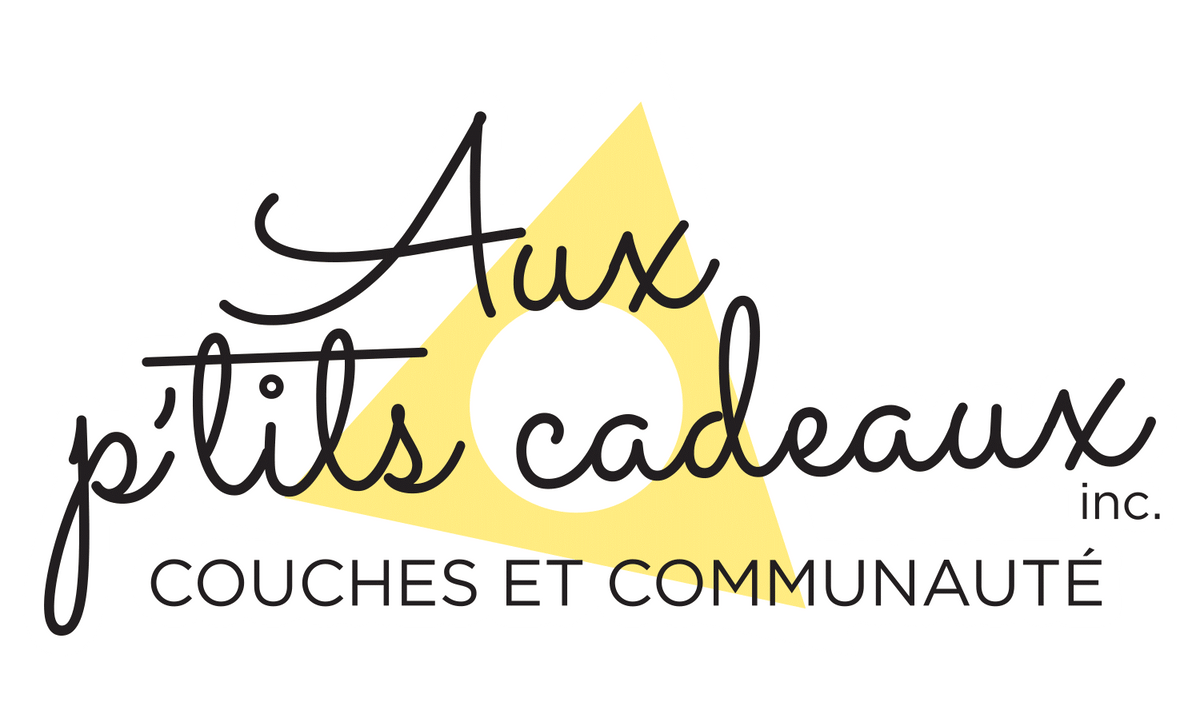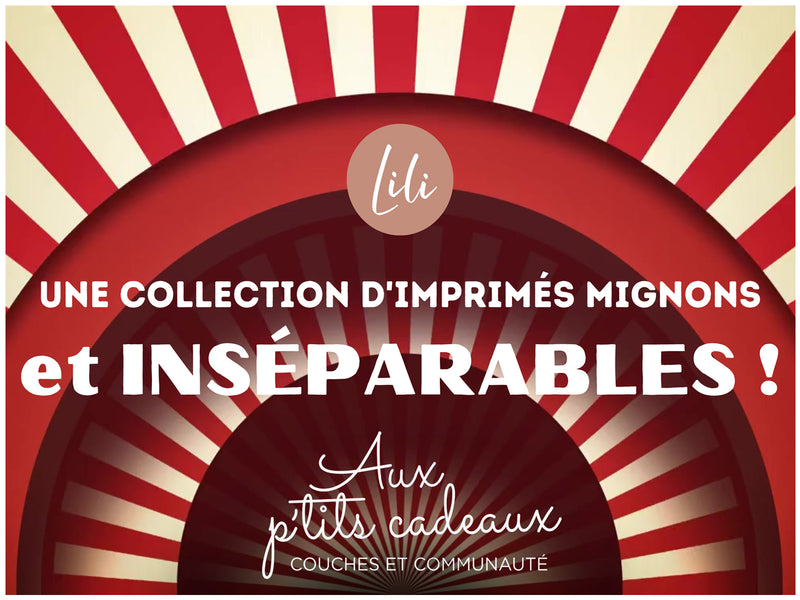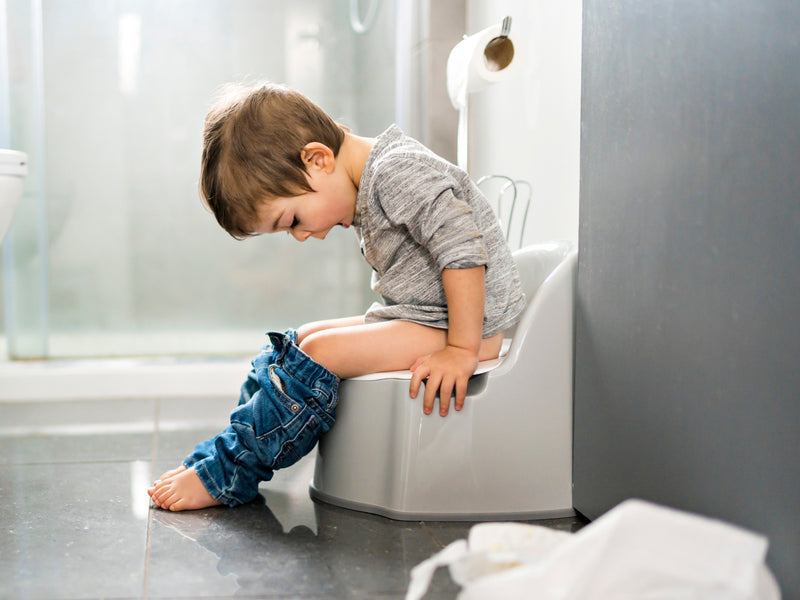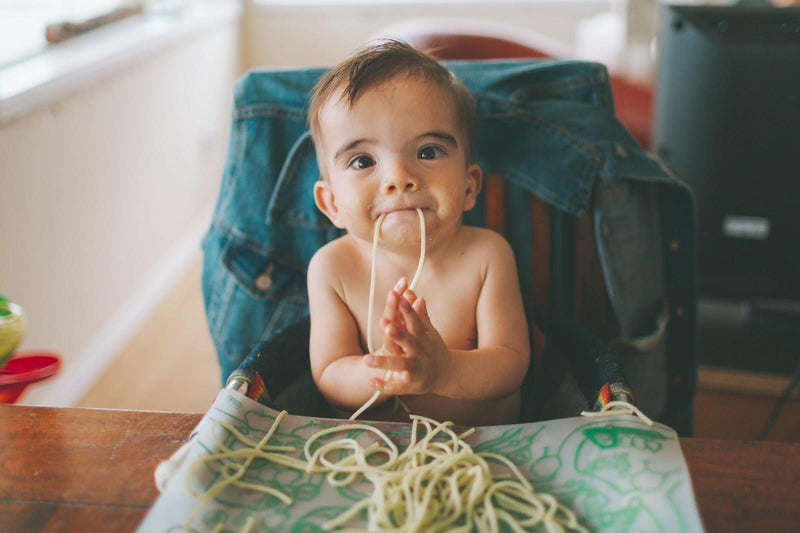
Cloth diapers aren't the same as they used to be. Easy-to-use all-in-one diapers with a variety of designs have replaced your grandmother's pins and rubber trousers. However, as wonderful as it is to have so many environmentally friendly options, navigating the possibilities can be overwhelming. If deciding between prefolds and pockets seems difficult, let us help you sort through your alternatives.
What are the types of washable diapers?
Cloth diapers are available in four different varieties. Which one is best for you depends on whether you want to save money, prioritize convenience, or a combination of the two.
Prefolds/Flats and Covers
Advantages: Low cost, variety of options, and easy absorbency adjustment.
Disadvantages: Need to fold and it is bulky.
These diapers have two layers: an absorbent inner layer and a waterproof outer layer. Cotton reusable baby diapers are commonly used, though bamboo and hemp inner layers are also viable options. You can even use material you already have if you want to save money.
This style of diaper is the cheapest, even if you choose high-quality prefolds for your absorbent layer. This is due to the fact that you may reuse the covers for several changes. You'll need to replace the absorbent layer every time your baby wets, but the waterproof coverings can be used for another day or two unless they're smelly or noticeably soiled.
That means you can get by with just a few covers (4–6 is generally enough) and a good supply of prefolds or flats (24 is the minimum number for a newborn).
What is the disadvantage of this method? It is the most difficult to master. Flats are essentially big, flat pieces of cotton, so you'll need to learn some diaper-folding techniques. Prefolds have a thicker space down the middle, but you'll still need to fold them a little to make a practical diaper. But don't be put off by this: diaper folding isn't rocket science.
You'll need to add a waterproof cover once you've figured out the inside absorbent layer. The majority of coverings are constructed of PUL, a thin and flexible breathable plastic material. You can alternatively go with fleece (which is bulkier but breathable) or wool (very breathable and absorbent but requires special care in cleaning).
Finally, pick the style of cover fastening you want: hook-and-loop (similar to velcro: easy to tighten, but also easy for larger kids to pull off), front snaps (secure and long-lasting, but less size flexibility), or side snaps (secure, trim look that's perfect for bulky kids).
Fitteds/Contours and Covers
Advantages: Low cost and easy to use
Disadvantages: Bulky
This approach is similar to prefolds but it does not require folding. Fitted diapers are made of absorbent material that has been formed into a diaper and has closures (again, you can choose between hook-and-loop or snap). They're available in a variety of designs and colours, as well as plain white, and are constructed of cotton, bamboo, hemp, synthetic materials, or mixtures. You'll need roughly 24 fitteds and 4–6 covers, just like prefolds.
Contours are just fitteds without any kind of closure. They're made out of a piece of absorbent fabric sewed into a contoured shape that fits inside a cover. Place the contour in the cover before putting the entire diaper on your kid in one piece.
Pockets
Advantages: Adjustable and easy to use
Disadvantages: Higher cost and requires reusable diaper inserts
It's difficult to outperform a pocket diaper when it comes to simplicity of usage and versatility. A diaper containing both an inner wicking layer and a waterproof outer layer with a pocket opening between them, as well as an absorbent insert, make up a pocket. You stuff the insert into the pocket and then place the diaper on your infant.
Pocket diapers, unlike prefolds, require you to wash the entire diaper (including the outer cover) every time you change it. The pocket opening, on the other hand, allows you to quickly alter the diaper's absorbency to suit your needs: use a thin microfiber insert during the day for a trim look, and a couple of hemp inserts for sleep. Babysitters appreciate pockets because, after stuffing the insert, putting one on is as simple as putting on disposable diapers. It requires no folding or special understanding.
The majority of pockets have a PUL covering on the outside. However, you can also buy fleece or wool. The inner layer is typically microfleece, which wicks moisture away to keep your infant comfy, although bamboo, hemp, or cotton are also options. Microfiber, a super-absorbent synthetic cloth, is the most common material for inserts, but cotton, hemp, and bamboo are other options.
Pockets are available in a variety of designs and colors, with hook-and-loop, front snap, or side snap closing options.
All-in-Ones
Advantages: Easy to use
Disadvantages: Highest cost and hard to adjust absorbency
If you're hesitant to switch to cloth because disposable diapers are more convenient, all-in-one diapers are the solution. All-in-one diapers include the entire diaper in a one piece, as the name implies. Because the waterproof layer, absorbent layer, and wicking layer are all sewn together, using an all-in-one is just as easy as using a disposable. There's no stuffing, folding, or fumbling with it; simply put it on and take it off.
The only difference between this and a disposable is that the dirty clothes are thrown in a washing pail rather than the garbage. There are also many different materials and colors to choose from, and closures can be hook-and-loop, front snap, or side snap.
Different types of reusable baby diaper materials
The materials used in cloth diapers are just as crucial as the style of diaper you choose for your baby. The following is a rundown of some of the most prevalent types of cloth diapers:
Materials for the Inner Layer
The inner layer might be absorbent or wicking. Choose a wicking material like microfleece if you want your infant to be comfortable and mainly dry between diaper changes.
You could use a wet-feeling material like cotton or bamboo if you want your child to feel the wetness (which is a big plus as you get closer to potty training age). You can also use minky, which is a super-soft material that toddlers adore. If your family has a history of allergies, seek for all-natural, organic fabrics like organic cotton and hemp.
Materials for the Outer Layer
PUL, fleece, and wool are the three main options for your diaper's outer layer. PUL, or polyurethane laminate, is made up of two layers: a cotton fabric layer and a molten plastic layer.
It's lightweight and breathable, and it comes in a variety of colors and patterns. Some families, however, choose to use more natural materials because the production process involves a chemical process.
Best for adding trim covering to beautiful outfits
Fleece is more breathable than PUL, therefore it can be the best choice if your baby gets rashes. It may be washed and dried in your machines with the rest of your diaper laundry, just like PUL.
Breathability at a low cost is the best use for this product
Wool is a popular choice among eco-conscious families. It's inherently absorbent and becomes extremely waterproof when treated with lanolin. It's also antimicrobial and odor-resistant, so it may be reused for a longer period of time than other types of covers. The only drawback is that washing it needs extra attention — it's better to wash by hand, re-lanolize on a regular basis, and lay flat to dry.
It's also more expensive than the other options, but there are some extremely reasonable repurposed wool sweater possibilities on Etsy.
How do you know if a cloth diaper is wet?
The easiest way to get a sense of how a diaper feels when it's wet is to feel it when it's dry. Take a few moments when you first put on the cloth diaper to get a sense of how fluffy and soft it is on the outside.
Continue to feel the diaper every 10 minutes or so, and if it seems stiffer when poked (gently, of course) or doesn't squish as well when pinching it between your fingers, you can assume it's wet and open it up to check. After a day or two of doing this, you'll get the hang of it and be able to tell with a simple poke.
How often do you change washable diapers?
Is it necessary for me to change the diaper after each pee?
Yes. Unless it's just a few drops, you'll want to change the baby after each pee to keep moisture and bacteria away from their sensitive skin and avoid diaper rashes. It's also important to keep the diaper region dry to avoid yeast sores.
How often do babies pee?
Newborns pee often. For the first few weeks, you should anticipate to change a newborn every two hours, with some babies wetting even more frequently. That number will gradually decrease as the infant matures, with the average toddler going about 6-8 times a day.
How many washable diapers do you need?
While there isn't a commonly accepted quantity of cloth diapers, it's helpful to have an idea of how many to buy, especially if you're not sure where to begin. It's a good idea to start with 2-3 days' worth of diapers. The amount of cloth diapers you need depends on your baby's age, your wash habits, and the sorts of cloth diapers you use, but 36 for newborns, 24 for infants, and 20 for toddlers is recommended.
How often should I wash diapers?
How often you plan to wash your cloth diapers can be the most important element in choosing how many you need. We recommend washing your cloth diapers every two days. That implies you'll need enough for two days of usual use plus any restroom emergencies.
If you have a baby, you may want to stock up on 25 cloth diapers (10 per day x 2 days + 5 extra emergency diapers) so you don't have to wash a load every day. This figure may vary depending on the sort of cloth diapers you use. However, having a larger stockpile means you'll spend less time doing laundry, and you'll be able to rotate your cloth diapers so they get less wear and tear.
The Diaper Stash
Having a supply of cloth diapers is a must. It may be pricey at first, but you'll be glad you have enough cloth diapers to endure between washes and rotate through your stock on a regular basis. This means you won't have to wash your cloth diapers every day, which means less wear and strain on your diapers and a longer lifespan.
Your cloth diaper stash size can help you keep your sanity while diapering, as well as save you money in the long term. So, how many are you going to need? You'll need 40-50 diapers if you're using one-size diapers. You should be able to use your cloth diapers for more than one child if you have a large enough stash and the ability to rotate them. If you have a smaller stash, plan on replacing your cloth diapers every six to nine months, whether they are one-size or scaled.




